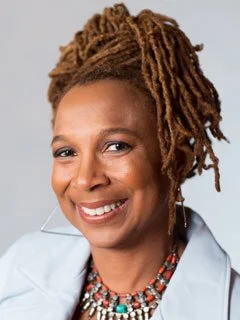Unmasking Intersectionality: The Multifaceted Struggle of Being a Black Woman
"And she had nothing to fall back on—not maleness, not whiteness, not ladyhood, not anything. And out of the profound desolation of her reality, she may very well have invented herself,” said Toni Morrison, a revolutionary African American author. This declaration calls attention to how intersectionality affects black women in such a way that we have nothing to fall back on for advancement or privilege in society.
Morrison's literary contributions have had a profound impact on the representation of the black experience, notably that of the black woman. Her numerous awards include the Presidential Medal of Freedom, the Pulitzer Prize, and the Nobel Prize in Literature—as the first black woman to do so. Her works continue to echo across generations.
Intersectionality, a term and concept coined by Kimberlé Crenshaw in 1989, illustrates the compound discrimination experienced by black women due to the liveliness of racism and sexism. . Crenshaw uses the analogy of a basement of discrimination. . Crenshaw urges the reader/listener to visualize individuals who are discriminated against because of their race, sex, class, etc. all in the basement together. . Those who are discriminated against due to a single factor are portrayed as standing on the shoulders of others who are discriminated against due to multiple factors, illustrating that in the absence of that specific factor, they would not be in the basement at all. .
Kimberlé Crenshaw
Some would deny the fact that black women are discriminated against in multiple arenas. This denial often arises within modern-day feminism, which unfortunately does not address the full scope of how black women are discriminated against. While it may address the woman-ness of a black woman, it will ignore her blackness and the impact of racial biases. Or very seldom, it will address their blackness but deny their ladyhood and femininity. This reluctance to recognize the multidimensional discrimination that black women encounter reveals a critical problem with modern feminist movements.
Comparatively speaking, there are similarities when looking at the experience of the white LGBT community. Some white men, apart from the LGBT community, have a tendency to neglect issues inherently associated with maleness and whiteness. Despite encountering prejudice on the basis of their sexual orientation, they possess the capacity to fall back on their maleness and whiteness. I think George Johnson, a publisher at NBC, sums it up wholeheartedly by stating,While black queer people are fighting for survival, white queer people are fighting for marriage equality.” Both are important, but his statement emphasizes the struggles of the LGBT community while also spotlighting the layers of privilege and discrimination.
Further, the inability to recognize the pivotal achievements of black trans women within the LGBT community exemplifies a trend of exclusion similarly observed in feminist movements. (But that’s a topic for another blog.)
To return to the matter, let us briefly examine the DeGraffenreid v. General Motors case as an example of how the intersectionality of black women was ignored. In this case, five black women sued General Motors for violating Title VII of the Civil Rights Act, a clause in the Act that prohibits racial discrimination in the workplace. These five black women were laid off from work by General Motors because of their “last hired, first fired” policy, which exclusively targeted black women. (For context, the context did not hire black women before 1964; so, because of the seniority-based policy, black women were fired at higher rates than anyone else.) The woman tried to sue on the basis of both race and discrimination, but the court sided with General Motors, saying that “there is no law that addresses a combination of gender and racial discrimination” and that “acknowledging that these women were discriminated against on both their sex and gender would create a super remedy that would give them relief beyond what the drafters of the relevant statutes intended.” This case shows a systemic disregard for the intersecting discrimination faced by black women.
“Intersectionality was a prism to bring to light dynamics within discrimination law that weren’t being appreciated by the courts,” said Crenshaw.
Morrison's declarations, in essence, emphasize the profound challenges of black women navigating a world where the intersections of race and gender intensify the challenges they face. As society works for equity and inclusion, it is critical to recognize and address the multidimensional challenges that black women confront.

